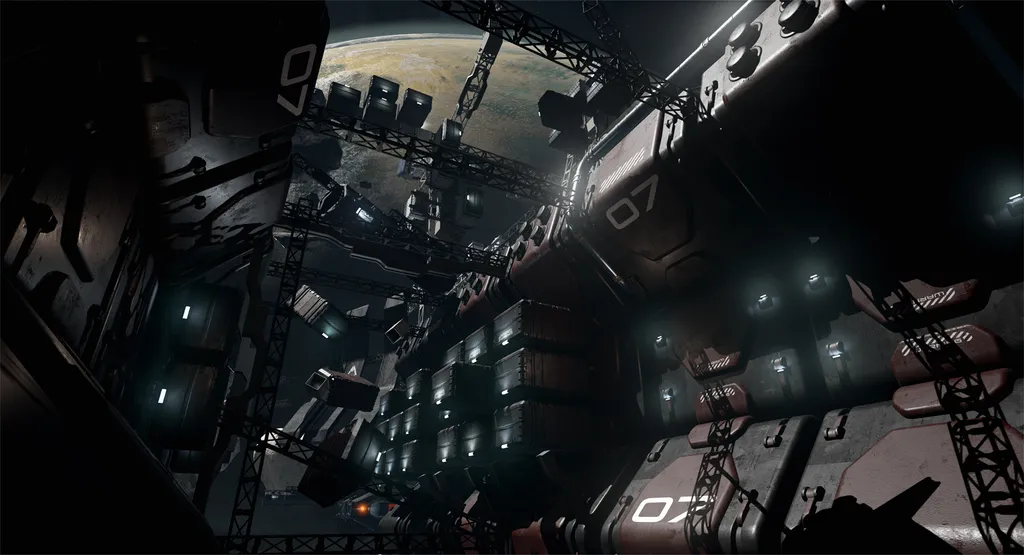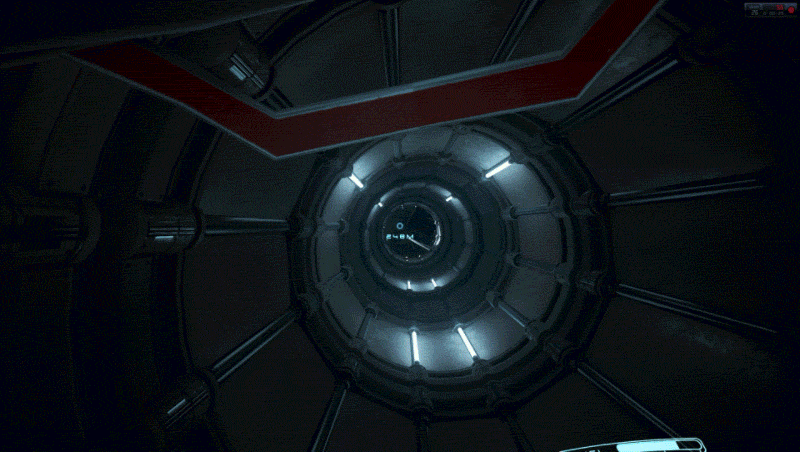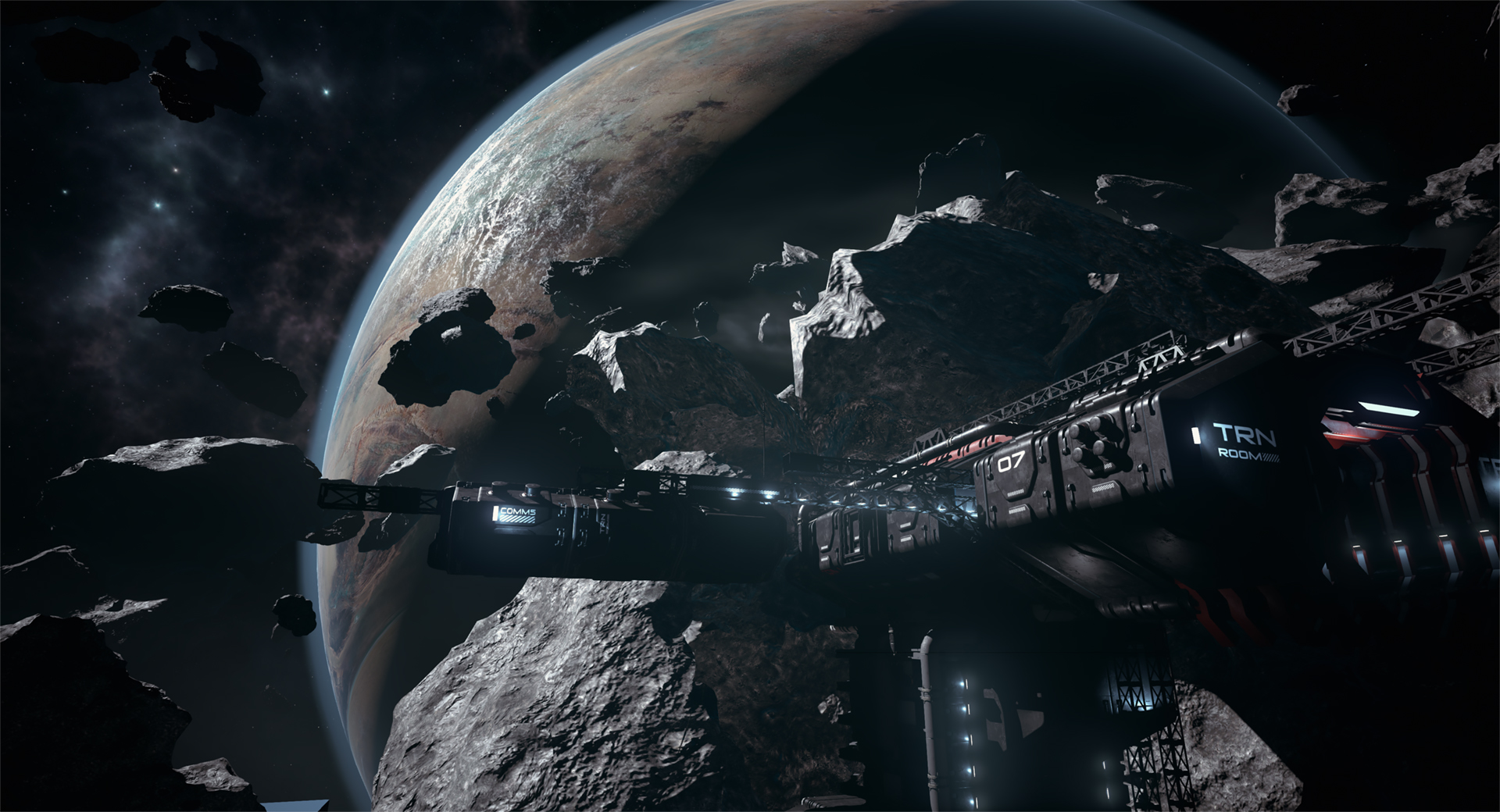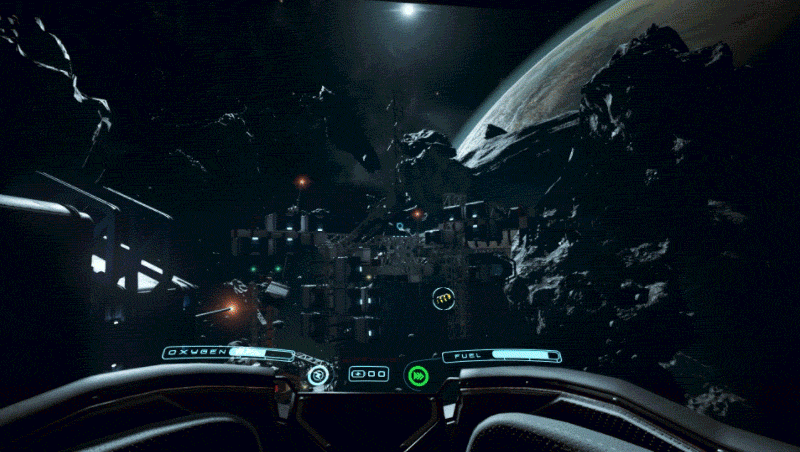After the dizzying ordeal that was ADR1FT in VR, you could forgive anyone for being apprehensive about stepping back into a space suit anytime soon. It’s Poland-based Anshar Studios that has the unenviable task of convincing you to do just that with Detached, its new multiplayer PvP experience for the Oculus Rift and HTC Vive. Fortunately, an early playthrough suggests that this is a much more considered, comfortable, approach to interstellar gameplay than what’s come before.
But let’s nip comparisons to Three One Zero’s Rift launch game in the bud right now; this is a very different experience. For influences, creative director Lukasz Hacura cites an obvious reference, 2013’s Gravity, but intriguingly mashes it up with something entirely unexpected: popular Mad magazine comic strip, Spy vs. Spy.
Bringing Multiplayer Intensity to VR
That name alone should give you some idea of what to expect; Detached is a 1 v 1 unique twist on the classic capture the flag game mode that strives to avoid violence but still raises the pulse. According to Hacura, it spawned from a failed attempt to create a cooperative multiplayer space game in which Anshar found players were usually trying to “screw each other over” instead of actually getting the job done. The simple answer to this problem was to “give the people what they want” and make that hostility the main mechanic.
There’s a single player mode too, though Hacura notes that it’s really there to teach you how to play. Matches are set in vast, open spaces littered with debris and asteroids, and each player is cast as the last surviving member of two rival corporations, competing to secure a major discovery for their respective companies. That means you’ll have to outwit and outrace the other player in order to claim the prize.
Each round is comprised of different stages. Players will first be dropped at opposite sides of the map and have to race to collect a skill that will give them a unique ability. While you’ll both start off with a boost mechanic, two other power-ups were sitting in the center of the match I played. One was a laser that will stun your opponent with one single, powerful shot before needing to cool off. The other was a shield that can be used to block that attack, but is similarly tied to a time out. If your opponent gets to your desired skill before you do? Tough luck; grab the other one.
From there, you’ll need to secure the package – clearly pointed out on the map – and bring it to an end zone to claim victory. Your chosen (or unchosen) skill will dictate the path you take to do this; the shield will allow you to smash through windows in a space station while the laser will power down a barrier on the other side of the room. Crucially, when one player has the package, you’ll need to hit them with your skill to make them drop it.
This is where Detached’s best fun is to be had, turning into a zero-gravity game of cat and mouse. The mandatory cool down times attached to both skills adds an extra layer of tension, as it’s all too easy to miss your opponent as you try to barge them with your shield active, or blast them with the laser. Failure will cost you precious time and give your enemy the chance to gain ground, though well-aimed shots give you a big opportunity to catch up as the other player is left motionless for a few seconds.
At one point, I’m caught in a twisting battle as I desperately try to land a shot on my foe, standing between him and the goal. Instead of making a mad dash, he clearly wants to disable me for a few seconds to give himself a fighting chance. He circles me over and over as I wrestle with controls that take a fair bit of getting used to but are ultimately pretty intuitive (shoulder buttons move you up and down, another accelerates, right stick rotates). After a few moments of held breath I snag a hit and grab my prize, taking the match by the skin of my teeth.
It was a highlight of an otherwise straightforward match that could do with a little more complexity. If anything, it’s a little unspectacular and overly simplistic in its current state, but Anshar is aware of this. New skills are in the works – Hacura repeatedly refers to a grappling hook that could make things very interesting – and other levels will offer more threats that could bring matches to an abrupt end. The team is even working to expand this current map, changing that static goal zone to a moving drop ship that you’ll have to accurately steer yourself into.
Building Variety from a Solid Foundation
As you can probably tell, Detached is a very different game from ADR1FT. Hacura thinks that the similarities end with the game’s setting, and even believes that the developer’s own VR integration is superior.
I’m inclined to agree. The two matches I played both lasted around five minutes, and I was surprised to find myself feeling entirely comfortable at the end of both. Hacura claims that Detached has benefited from “two years of prototyping” to the point where the game is as accommodating as Anshar can make it without putting constraints on the player such as removing some movement options. Instead, the team worked hard to hit that 90FPS framerate that Oculus demands and the steering has been fine-tuned, while the player’s suit itself has been designed to feel like a cockpit that will also give you a point of reference.
It’s like Hacura says; Detached is as comfortable as Anshar could possibly make it. If you want to test those limits and continuously loop upside down with boost on then, yes, you might want to throw up, but gameplay isn’t likely to necessitate this.
Right now, there’s a solid foundation for a unique multiplayer VR game in Detached. Fortunately, Anshar has plenty of time to make those additions it’s been promising; the game is planned to launch in Early Access around Gamescom 2016 in August as a VR-only experience. The full title should them go live in Q1 2017 with a non-VR version and cross-play between Rift and Vive. Detached could just be the strategic and intense sci-fi duel that VR gamers need right now.





























